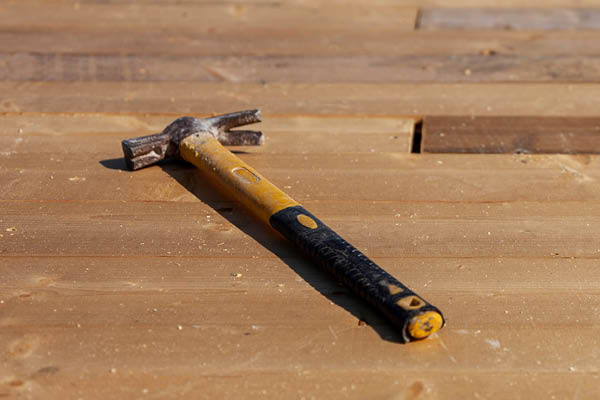
Flooring is an important consideration in any home, both for livability and resale value. One of the first things that prospective buyers notice about a listing, the type or types of flooring in a property can increase or decrease a home’s appeal. It’s also one of the most common elements that buyers change during renovations and home improvements. Fortunately, today’s homeowners have a wide variety of flooring material options and price ranges from which to choose. Whether you’re selecting new floors or living with the ones you have, here are some common mistakes to avoid:
- Choosing flooring that’s not compatible with your lifestyle. Before moving into a new home or selecting flooring materials for a restoration, think about your household’s routine and needs. Do you have pets? Active children? Seniors living in your home? What’s the weather like where you live? Which rooms get the most use? These are some of the considerations to keep in mind when deciding whether to use carpet, wood, tile, or other materials in specific areas of your house. While a certain type of flooring may appeal to your taste and budget, if isn’t practical for your lifestyle it might not be the best choice in the long run.
- Selecting floor colors and finishes in a store. Flooring can look different inside your home than it does under a store’s lighting. Ask if you can take samples of materials and finishes with you to compare them with your décor and to look at the choices in your home’s different lighting variations.
- Rushing the installation of wood floors.In many climates, it’s important to let wood floors acclimate before they are installed. This means allowing the wood flooring materials to sit in your home for several days or weeks (ask your flooring contractor for specific recommendations) to adjust to temperature and moisture levels. Skipping or rushing this important step can cause problems in the future.
- Putting furniture in too soon after installation. Be patient about moving furniture back in after a new floor goes down, especially heavy pieces. Ask your contractor how long finishes need to dry and grout needs to set before you bring furniture back. Consider putting down moving paper in high-traffic areas to temporarily protect your new investment.
- Not cleaning floors often enough. Most types of floors benefit from regular sweeping and vacuuming. Even small dirt particles can cause scratching and wear to some flooring materials over time. Keeping floors clean can help them look better longer, and can show the floors off to their best advantage.
- Not cleaning floors the right way. Using the wrong cleaning products and methods can harm floors, especially wood ones. Talk to your builder or flooring contractor and ask for specific instructions and products for proper care of your floors and their particular finishes. Be sure to communicate these instructions to any contractors or individuals who will be cleaning your floors in the future.
The addition of area rugs can help reduce wear on many types of floors as well as add color and warmth to your décor. Choose rugs that are compatible with the color scheme and style of your home, and place them in areas that get a lot of use, such as dens or sitting areas. Runners can help protect hallways while smaller rugs can be placed in front of doorways and kitchen sinks to shield floors from tracked-in dirt and spills.